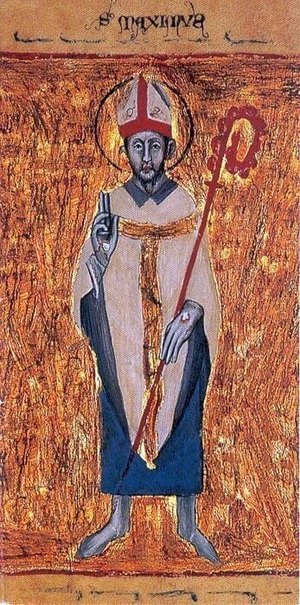From the Medieval Studies Research Blog: A Peculiar Lombardic Liturgical Calendar and its Easter Homilies

MS B44 Inferiore of Milan’s Ambrosiana Library is an unstudied aestivial (summer season) homiliary from the thirteenth century. It is an exceptionally large manuscript, measuring approximately 40cm by 30cm. An eighteenth-century librarian of the Ambrosiana marked it as a homiliary of the “Ambrosian rite,” which is not a description meaningful for ascertaining the paradigms on which the homiliary’s structure is based. The invocation of the “Ambrosian rite” does, however, point to peculiarities in the Lombard region’s liturgical calendar which B44 might reflect. The homiliary’s reflection of local liturgical traditions could best be judged through a study of its “sanctorum” portion; this, however, was not the focus of my time with the manuscript. Despite its large size and length, the homiliary only spans the summer part of the liturgical year. Its de tempore section begins with the Easter Vigil and ends with the Feast of the Nativity of the Virgin. The Feast of Mary’s Nativity was locally important since the Milanese Duomo was dedicated, from at least the eleventh century, to the Blessed Virgin’s birth.
To familiarize myself with the manuscript’s structure and homiletic content, I surveyed the sermons it included for the Easter season (1v-52r), noting sermon incipits from Easter until Pentecost. Though for the sanctorale section, there are a wide variety of authors, the Easter de tempore section largely consists of homilies from Sts. Ambrose, Bede, Gregory, and Augustine. The sermon choices are, however, eclectic, and do not match the arrangement of the paradigmatic homiliaries summarized by Réginald Grégoire in his still-unsurpassed Homéliaires Liturgiques Médiévaux. In short, MS Inf. B44’s Easter sermons do not match those included in the Roman and Toledan homiliaries, nor those in the collections of Pseudo-Fulgencius, Paul the Deacon, or Romain d’Agimond.
This is an excerpt from “Ambrosiana MS B44 Inferiore and an Easter Homily of Maximus of Turin” written by Mihow McKenny, Ph.D. Candidate in History. Read the full story.